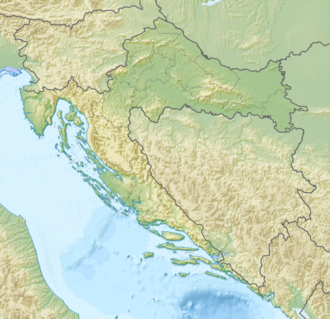| Mosor | |
|---|---|
 View of Mosor from the Mosor Star Village | |
| Highest point | |
| Elevation | 1,339 m (4,393 ft) |
| Coordinates | 43°31′37.80″N16°38′14.40″E / 43.5271667°N 16.6373333°E |
| Geography | |
 | |
| Location | Split-Dalmatia County, Croatia |
Mosor (Latin : Massarus), or Mount Mosor (Massarus Mons; Italian : Monte Massaro), is a mountain range in Croatia located near the city of Split on the Adriatic coast. It belongs to Dinaric Alps, and stretches from the pass of Klis in the northwest to the Cetina River in the southeast.
Contents
The highest point is the eponymous Mosor peak at 1,339 m.a.s.l. [1] There are no inhabited areas on the mountain above 600 metres. Mosor is mainly composed of karst — limestone rocks.
It attracts mountaineers from Croatia. There are two alpine huts and many mountaineering paths on Mosor.

